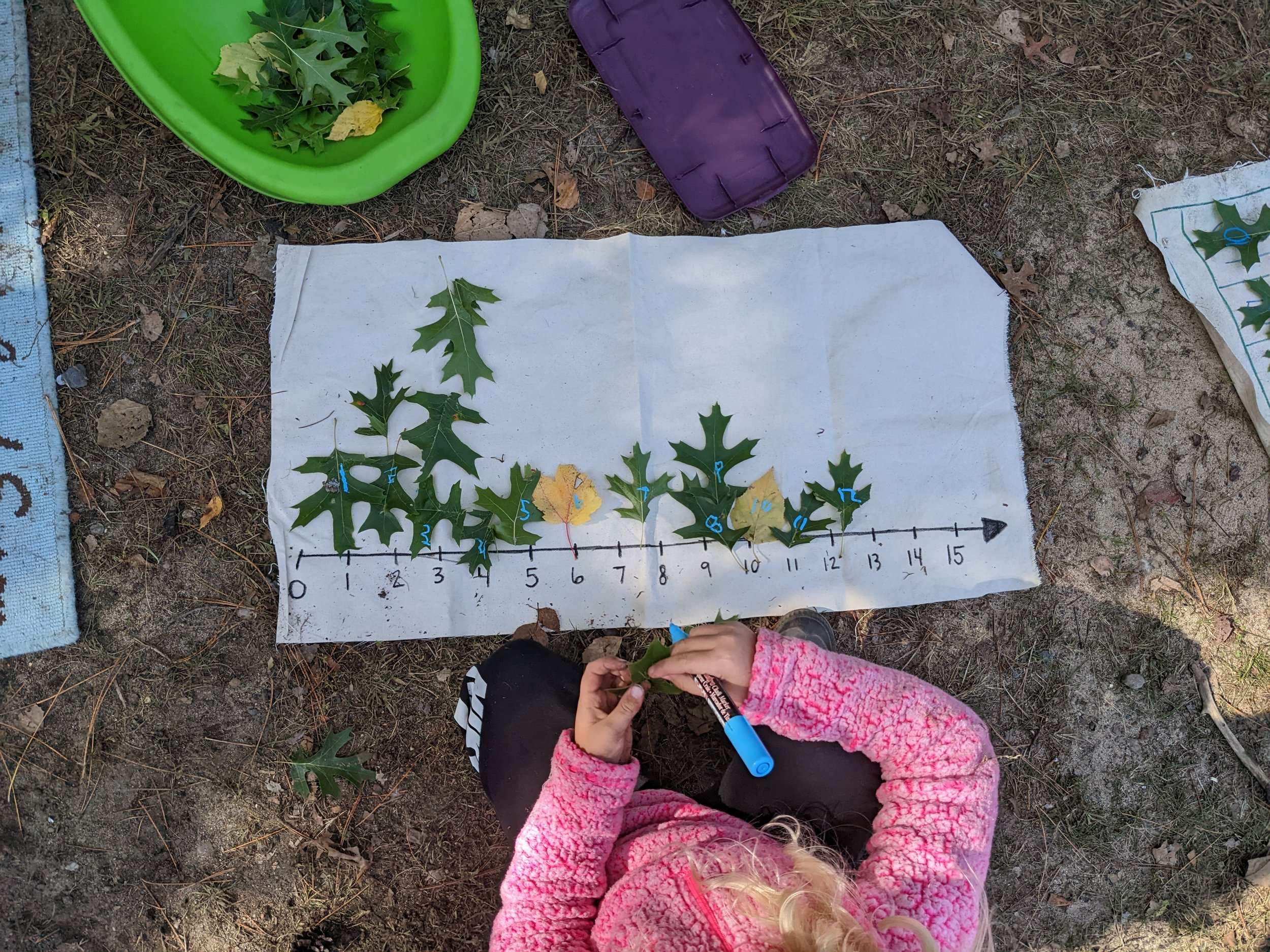Transforming Education: The Rise of Outdoor Learning Spaces in Non-Traditional Schools
The Importance of Outdoor Learning Spaces
Outdoor learning spaces provide numerous benefits for students. Research shows that exposure to nature can enhance academic performance, creativity, and overall well-being among students. Outdoor learning spaces:
Encourage active engagement with the environment
Support physical health through increased movement
Foster a sense of exploration and curiosity
Enhance problem-solving skills by providing real-world challenges
Having access to outdoor learning spaces in non-traditional schools can enrich the learning experience and promote a holistic approach to education.
Macy was inspired by our nature number line and decided to rewrite the numbers from the number line on the leaves.
Benefits of Outdoor Education
Outdoor education offers numerous advantages for students beyond traditional classroom settings. Research suggests that outdoor learning can enhance student engagement, boost creativity, and improve physical health by encouraging movement and exploration. Exposure to nature has been shown to reduce stress levels and increase overall well-being. Additionally, outdoor education promotes teamwork, problem-solving skills, and a deeper connection with the environment.
Characteristics of Non-Traditional Schools
Non-traditional schools focus on flexible curriculum and unconventional teaching methods to tailor education to each student's needs. These schools often emphasize hands-on learning, collaboration, and real-world experiences. Some common characteristics of non-traditional schools include smaller class sizes, integrated technology in teaching, personalized learning plans for students, and a strong emphasis on creativity and critical thinking skills.
Role of Outdoor Learning in Educational Transformation
Outdoor learning plays a crucial role in transforming education by offering students a hands-on and engaging approach to learning. Research indicates that learning outdoors can enhance creativity, critical thinking, and problem-solving skills. It provides students with a unique opportunity to connect with nature, fostering a sense of curiosity and exploration. Outdoor learning spaces in non-traditional schools serve as extensions of the classroom, creating a dynamic environment that promotes active learning and overall well-being.
Designing Effective Outdoor Learning Spaces
Outdoor learning spaces are designed to provide hands-on experiences that complement traditional indoor learning environments. They aim to enhance creativity, boost physical activity, and improve students' overall well-being. When designing these spaces, consider natural elements such as trees, grass, and rocks to create a calming and stimulating environment. Flexible seating options like benches, logs, or even picnic tables promote movement and collaboration among students. Ensure easy access to necessary supplies and technology to support various teaching methods. A variety of learning zones, such as quiet corners for reflection, interactive areas for group activities, and open spaces for games, allow for diverse learning experiences. Remember, the design should be inclusive and accessible to all students, regardless of their abilities or limitations.
Integration of Nature and Curriculum
Outdoor learning spaces offer an opportunity for integrating nature directly into the curriculum, promoting hands-on experiences and environmental education. This integration allows students to learn subjects like science, math, and art in a natural setting. Research shows that connecting with nature can enhance learning outcomes, improve mental well-being, and foster a greater appreciation for the environment among students.
Positive Impacts on Student Development
Outdoor learning spaces can enhance student development in various ways. Research shows that spending time outdoors can boost creativity, critical thinking, and problem-solving skills. It also helps improve concentration and reduces stress levels among students. Moreover, outdoor learning encourages physical activity, which contributes to overall well-being and healthier lifestyles. Being in nature can foster a sense of connection to the environment and promote a greater appreciation for the natural world.
Student Engagement in Outdoor Learning
Outdoor learning spaces can significantly increase student engagement. Studies have shown that students are more attentive and participative when learning outdoors. Natural settings can promote creativity and reduce stress, leading to a more enjoyable learning experience for students. Teachers often find that students are more eager to learn and showcase improved behavior in outdoor classrooms. Outdoor learning also allows for hands-on experiences that can enhance comprehension and retention of the material being taught.
Teacher Training and Support for Outdoor Education
Teachers undergo specialized training to effectively incorporate outdoor learning into their teaching. They receive support to develop engaging outdoor lesson plans and ensure student safety outside the traditional classroom. Outdoor education training equips teachers with skills to create immersive learning experiences in nature, fostering creativity and critical thinking. Organic Roots Schoolhouse has completed forest school training with Dr. Jean Lomino , the founder and director of Nature Kin Farm and Forest and The Forest School Teacher Institute.
How did this blog entry inspire you? What can you do to make changes to your child’s learning space? Please share in the comments your thinking.

